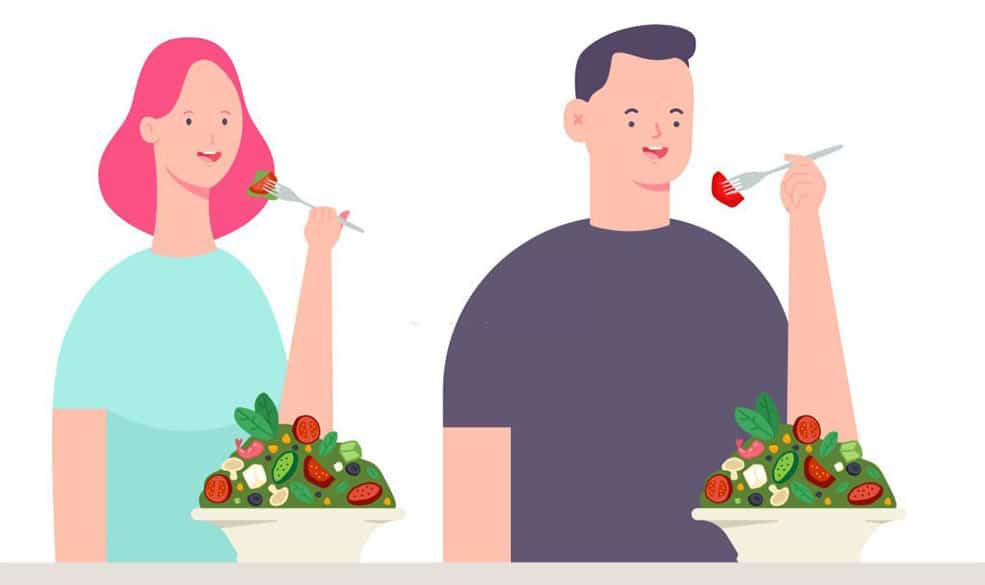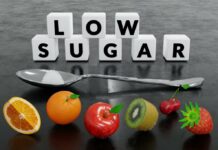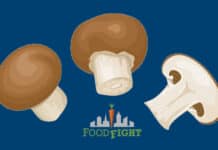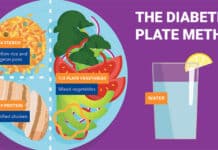So you've been eating a Standard American Diet (initials = SAD) all your life. Home-cooked meals and fresh fruits and vegetables have taken a back seat to convenience, financial constraints, and your taste buds, but you've made up your mind that it's time for a change.
People are sick and tired of being sick and tired. They're wary of spending all their money on medical care and prescription drugs only to get more unwell year after year. They're also tired of feeling terrible and having no energy to enjoy life.
Do you want to feel better, reverse disease, lose weight, and have more energy and mobility?
It's possible. People are doing it every day, and the food on your plate is the most important place to begin.
5 Essential Steps to a Real Food Diet
Our goal should be to reach a 90/10 real food diet. This means that 90% of our food choices should be whole, from the Earth, and unprocessed. We reserve the other 10% for fun and for times when we can't eat real food (travel, social functions, etc.).
However, making the transition from a Standard American Diet (SAD) to a 90/10 diet can be difficult. Carbohydrates and sugar, which are the main staples of SAD, have been scientifically proven to be as addicting as cocaine, which can make breaking the SAD habit very hard and very unpleasant for some.
Related Article: Beat Your Sugar Cravings in 30 Days
A real food diet that is low in carbohydrates and sugar will cause epigenetic changes that result in boundless energy, effortless weight management, and better health overall.
If you're not one of those who can suddenly overhaul your entire life in a day, here are the most effective initial steps for gradually switching to a real food diet.
Step 1: The Purge
This is the first concept I introduce to anyone wanting to change their life with nutrition. It's drastic, so not everyone can do it. If you can't, then start with the “half-purge,” explained below.
The purge involves going through your cupboards and pantry and throwing out all the processed food in wrappers, bags, and boxes. If it doesn't rot eventually, it's not real food.
Examples are bread (yes, even whole grain), pasta, bagels, breakfast & snack bars, cereal, chips, crackers, microwavable popcorn, and all other such fake food.
The refrigerator/freezer also has to be gutted — ice cream, frozen dinners, frozen pizzas, waffles, microwavable breakfast sandwiches, etc.
If it's not in your house, you can't eat it, and if you're truly serious about changing your body and your health, the purge eventually must happen.
If an irresistible craving overcomes you for your favorite snack, force yourself to leave the house to get it. Even then, only buy enough for one sitting, not five days' worth.
The Half-Purge: For those who feel the purge is too drastic, the half-purge is much easier and should be your first step. Make a list of everything in your cupboards, pantry, and refrigerator that you could live the rest of your life without eating and not caring, and eliminate those first.
Step 2: Add More Real Food
If you're transitioning slowly to a real food diet, don't begin by immediately thrusting yourself into tortuous deprivation. The thought of never again eating the foods you love is often the most daunting idea of all, followed by some highly typical excuses:
- “I want to enjoy my life.”
- “Everything in moderation.”
- “Food is supposed to be enjoyed.”
And to these, I say:
- “Being disease-free is more enjoyable than pleasing your taste buds for a few seconds.”
- “Everything in moderation is a phrase used by those not fully committed to change.”
- “Healthy food can taste good.”
When you're truly ready to eat differently and lose weight, there simply are no excuses. However, step 2 doesn't involve excluding the foods you love just yet.
Instead, begin eating more real food (especially leafy greens) with each meal. If fruits and vegetables normally comprise 0-25% of your plate, increase it a little each day. Eventually, you want your entire plate to consist of whole, unprocessed foods that were grown by the Earth.
Step 3: Begin Limiting Carbohydrates
It's not uncommon for someone eating the SAD to consume over 300 grams of processed carbohydrates per day. This excessive carb intake leads to obesity and a myriad of diseases like cancer, insulin resistance, type 2 diabetes, thyroid problems, high cholesterol, osteoporosis, heart disease, rapid aging, and many other issues.
If you're going to count something, quit counting calories and start counting carbs. To maintain weight, most people need to eat about 100-150 grams of carbs per day. For weight loss, that amount should be lowered to 50-100 grams. For rapid weight loss and to reverse disease, 20-50 grams of carbohydrates per day is ideal.
Note: Get your carbs from fruits and vegetables, not cereal and bread.
Don't be surprised if you experience intense sugar cravings, severe energy fluctuations, and other strange symptoms (often called the “low-carb flu”) during this phase. This is the result of your body switching gears to burning fat for fuel instead of sugar.
Related Article: How a Low-Carb Diet Can Change Your Life
Step 4: Find Healthy Snacks
SAD eaters are big-time snackers. They drink soda regularly, eat chips and popcorn while watching TV, and typically have a sweet dessert after dinner. In fact, sometimes they skip dinner completely and go straight for the dessert!
It's easy to avoid junk during the day. It's after their evening meal when people slip. So always have healthy, real food snacks available.
Related Article: Healthiest Nuts for Snacking
Other options are vegetables and hummus, apples and almond butter, berries and Greek Yogurt, healthy snack bars made with organic nuts, and leftovers from your real food dinner.
Step 5: Start Cooking at Home
The main excuse people make for not cooking at home is time. They're so busy with life, work, and family that spending an hour in the kitchen every night is just not feasible.
Although a lack of time is the #1 excuse, failure to plan is the #1 reason. If you aren't prepared, you'll be much more likely to go to a drive-through or toss a frozen pizza in the oven when you're tired and hungry, but it takes the same amount of time to cook a chicken breast and a side of asparagus as it does a frozen pizza.
Planning is a necessity when you have a career and/or kids who are involved in sports and other activities, so prioritize daily meals as though they're just as important as everything else. The key is to keep it simple.
The following resources are a great place to start for easy and delicious recipes:
- Wellness Mama – Simple Answers For Healthier Families
- Balanced Bites – with Diane Sanfilippo
- Nom Nom Paleo – an award-winning food blog
- Super Healthy Kids – Making Fruits and Vegetables Delicious and Fun






